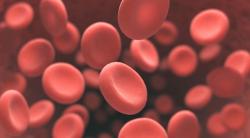- About
- Advertise / Support
- Contact
- CancerNetwork.com
- TargetedOnc.com
- OncLive.com
- OncNursingNews.com
- Terms & Conditions
- Privacy
- Do Not Sell My Information
© 2024 MJH Life Sciences™ and CURE - Oncology & Cancer News for Patients & Caregivers. All rights reserved.
Younger Cancer Survivors Found to Skip Out on Follow-Up Care
While adolescent and young adult survivors of cancer face an increased risk of long-term complications, many people in this group end up "lost to follow-up," according to recent research.
Survivors of cancers that strike during adolescence or young adulthood (AYA) are at risk for a number of side effects that can last for long periods of time or will not appear until years later, including heart problems, infertility and secondary cancers that arise from treatment for the initial disease.
But in a recent study of 2,367 AYA cancer survivors diagnosed between 2000 and 2015, 37 percent had been “lost to follow-up,” meaning they’d had no contact with their doctors since that time frame.
The data were released in advance of the American Society of Clinical Oncology’s annual Cancer Survivorship Symposium, set for Feb. 16 and 17 in Orlando, Florida. Lead author Lynda Kwon Beaupin, M.D., of Roswell Park, shared the results during a webcast press conference held Feb. 12.
Kwon and her fellow researchers, who tracked patients diagnosed with cancer between the ages of 18 and 39 using the tumor registry at Roswell Park Cancer Institute, wanted to find out whether health insurance status, communication levels with oncologists or ongoing life adjustment changes influenced the likelihood of AYAs to seek follow-up care. Those issues had emerged as potential factors in a smaller, earlier study.
In the current study, the patients were separated into two groups. One cohort included 783 patients diagnosed between 2005 and 2009, and the other comprised 852 patients diagnosed between 2010 and 2014. Researchers specifically looked at the top five cancers that affect AYA patients treated at Roswell Park, and for which there are known interventions and follow-up strategies, Beaupin said. Those were leukemia/lymphoma, melanoma, thyroid carcinoma, breast cancer and germ cell tumors.
When it came to a survivor’s likelihood of seeking follow-up care, investigators found no significant difference based on cancer type or health insurance status.
“Further research is needed to determine other implicating factors, such as age at diagnosis and type and intensity of cancer treatment received,” the researchers wrote.
They did note that the cohort diagnosed earlier was less likely to still be engaged with follow-up care. In 2016, insured and uninsured members of the more recently diagnosed group failed to get follow-up care at rates of 33 and 39 percent, respectively. Among those diagnosed earlier, 47 percent of those with health insurance and 46 percent of those without it did not seek follow-up care in the same year.
“We’ve done a tremendous amount of work showing that cancer and the treatment of cancer, especially for younger people, can result in long-term health risks,” said press cast moderator Timothy Gilligan, M.D., MSc, FASCO, an ASCO Expert in Survivorship Care and a medical oncologist at the Cleveland Clinic Taussig Cancer Institute.
“For a number of them, there are areas where can help if we intervene, but if we don’t see patients, we can’t do that, (nor can we) advise on lifestyle factors that might be very important in modifying risk for these patients. This highlights an important challenge to get survivors to take advantage of what we know and what we can help with.”
Related Content:



